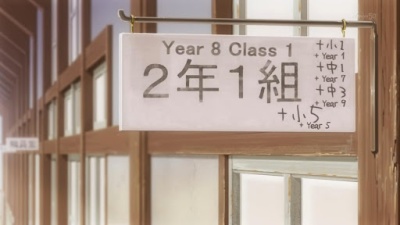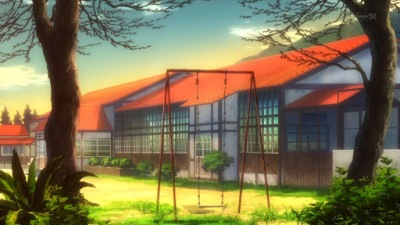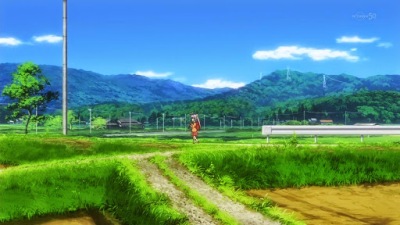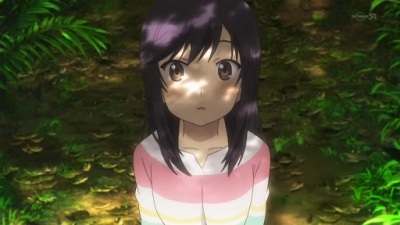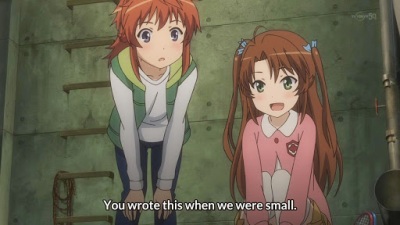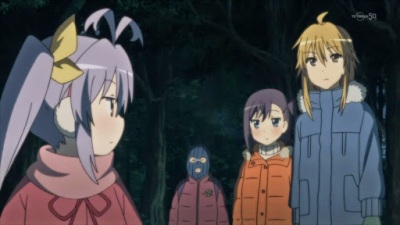I really believe that “genre” refers, first and foremost, to the feeling that a piece of fiction inspires in its audience. Saint Augustine once commented on how interesting it is that an audience will stand and applaud at the end of a tragic play, even though they have tears in their eyes. This is what Aristotle famously called “catharsis,” an experience by which we cleanse our souls of negativity by proxy with works of fiction.
Including Mushishi in the category of “iyashikei” is a little bit problematic. Comedy elements are still present in shows like Aria, Hidamari Sketch or Non Non Biyori, though with diminished focus, and more to serve the light atmosphere than anything else. Mushishi, on the other hand, contains no comedy whatsoever. It may qualify as drama, but hardly tragedy, though it does have its share of tragic characters. When it comes down to it, the main feeling evoked by Mushishi is a sort of silent, meditative seriousness, which feels more emotional than intellectual in nature, a feeling not at all foreign to the shows I just mentioned.
![Mushishi - 01 [BD.720p x264 AAC].mkv_snapshot_09.02_[2014.08.19_23.58.19]](https://animehealing.files.wordpress.com/2014/08/mushishi-01-bd-720p-x264-aac-mkv_snapshot_09-02_2014-08-19_23-58-19.jpg?w=500&h=281) |
| Cool as a cucumber. |
A quick comparison I’ll make here is to one of my favourite healing moments in Non Non Biyori. Natsumi and Komari run away from home to their old hideout in order to hide from their mother, who is angry at Natsumi. While there, they briefly reminisce about times that they relied on one another as children. Then a feral cat steals some food from the two of them, and the girls chase after it, only to find the cat sharing its food with its kittens. Natsumi stretches, looks up at the sky, and simply tells her sister that it’s late and that they should head home.
I think that feeling of sentimental contemplation you get watching a scene like that is the bread and butter of healing-type shows. It’s more important to have that than it is to have jokes or tragic plot twists. Mushishi finds its own way of creating that emotional state, and the way it gets there is more through a kind of fantastical sequence of “what ifs” that both create an atmosphere of wonderment and demand meditation on the choices and values of the characters.
![Mushishi - 03 [BD.720p x264 AAC].mkv_snapshot_16.29_[2014.08.20_00.04.41]](https://animehealing.files.wordpress.com/2014/08/mushishi-03-bd-720p-x264-aac-mkv_snapshot_16-29_2014-08-20_00-04-41.jpg?w=500&h=281) |
| The ever-changing seasons inform an understanding of how long Ginko’s journey is. |
The typical structure of an episode of Mushishi is that Ginko, the main character, wanders into a situation where strange supernatural phenomena are occurring. With a little bit of investigation, he is able to identify the cause of the phenomenon, and prescribe a course of action for getting rid of the “Mushi,” the spirits causing the problems, in order to restore the natural order. However, by the time Ginko arrives, his patients have often already incorporated the Mushi into their daily lives, or even found ways of making them useful. Either that, or the cure itself comes at some kind of great cost, and the characters are asked to weigh the benefits of treatment against the changes it will create for them. Afterwards, Ginko continues on his way, often taking a modest payment with him, and wanders in search of more people in need of his help.
In and of themselves, the episodes feel sort of like little parables with vague philosophical lessons. And yet much of the time there’s no moral component to them, and it’s simply about choosing one bad thing over another bad thing. Some people might see Mushishi as being negative or even pessimistic for this reason.
![Mushishi - 04 [BD.720p x264 AAC].mkv_snapshot_21.15_[2014.08.20_00.09.26]](https://animehealing.files.wordpress.com/2014/08/mushishi-04-bd-720p-x264-aac-mkv_snapshot_21-15_2014-08-20_00-09-26.jpg?w=500&h=281) |
| The stories typically end with a few scenery shots and a brief epilogue. |
Anyone who has watched Mushishi will know what I mean when I say that the emotional crescendo doesn’t come until the end credits, and it’s mostly atmospheric in its delivery. Each episode (I think, anyways) has its own theme song, and that song plays continuously through the final sequence of events into the credits, signaling the end of the story. The effect of this seamless connection between story and credits is to gently stir you out of your immersed state of mind and back to the realization that what you saw was just a story, after all. It’s almost like the characters themselves were walking out onto the stage and taking a bow.
As for Ginko himself, there’s no character arc or continuity between himself and each episode. At least one episode is a “prequel” episode showing an earlier point in his life, which makes the assumption of continuity between the episodes problematic. They could very well be watched out of order without confounding Ginko’s character in any way. But why is the story written like this? Why not show Ginko growing and changing as he encounters these events?
![Mushishi - 06 [BD.720p x264 AAC].mkv_snapshot_21.54_[2014.08.20_00.15.44]](https://animehealing.files.wordpress.com/2014/08/mushishi-06-bd-720p-x264-aac-mkv_snapshot_21-54_2014-08-20_00-15-44.jpg?w=500&h=281) |
| The characters Ginko meets are confronted with tough, life-altering choices. |
I’ve thought a lot about this, because when I started watching Mushishi I was wondering when we were going to see some growth on the part of Ginko, and I was disappointed that it didn’t happen. Even though there were a few episodes that deepened an understanding of his character and his history, Ginko is someone who is finished growing, a seasoned expert with a very singular attitude towards his work. This is not to say he’s inflexible, as he’s sometimes shown changing his mind or being persuaded by others. Sometimes characters ask him to stay with them or offer him a home, but he turns them down, explaining that he can never stay in a single place because he attracts Mushi. And you can see that it pains him to do so, much of the time.
So this is the real secret of Mushishi, and the real reason that Ginko can never stay with the people he meets. What you are watching as you observe Ginko is an outsider watching a story. Aside from providing the cure to what’s going on, Ginko always tries to take a hands-off approach to his work, usually letting the characters decide for themselves whether they want his treatment. Sometimes he’s forceful in his admonishments, but even so it rarely ever seems like he’s really in control of what’s going on. When he does get emotionally involved, he seems almost like a person watching a movie and shouting at the characters on screen, and whether or not they listen to him is always a tossup.
![Mushishi - 09 [BD.720p x264 AAC].mkv_snapshot_14.37_[2014.08.20_00.24.44]](https://animehealing.files.wordpress.com/2014/08/mushishi-09-bd-720p-x264-aac-mkv_snapshot_14-37_2014-08-20_00-24-44.jpg?w=500&h=281) |
| A recurring theme is Ginko placing the “cure” in the hands of others. |
There are other subtle clues to this in Ginko’s character design. Despite the fact that the historical period of Mushishi is clearly pre-20th century, Ginko’s clothes are all modern. He has only one eye, and the blind glass one remains veiled behind a curtain of hair. And while the origin of his empty eye socket is something explained in the story, I think it also symbolizes the fact that Ginko himself is only “half” of the viewer, that there’s another veiled observer with him.
Sounds a little tacky, doesn’t it? It might be if it were explicit, but it’s not. It’s very understated and nicely hidden detail of the narrative. When you watch an episode of Mushishi, Ginko watches with you. And when you see him react to what’s going on, it’s like turning to a fellow observer and seeing how they are reacting to the same thing you’re viewing. This is why Ginko absolutely cannot have anything at stake in the stories, can’t stay for long, can’t choose how the stories end. And it’s also why you always watch Ginko with the feeling that he’s seen hundreds of “episodes” of Mushishi that may never be animated.
![Mushishi - 13 [BD.720p x264 AAC].mkv_snapshot_19.03_[2014.08.20_00.33.36]](https://animehealing.files.wordpress.com/2014/08/mushishi-13-bd-720p-x264-aac-mkv_snapshot_19-03_2014-08-20_00-33-36.jpg?w=500&h=281) |
| Ginko frequently acts as a guide rather than a leader. |
And this is why I brought up “catharsis” at first. Stories have a therapeutic effect on the soul. A person who is filled with many stories is a person who has had their soul cleansed over and over again. So while you are watching things that are often tragic, in Mushishi what you’re really watching is an audience member, a person watching a sad story, and then moving on and leaving it behind. People die, tears are shed, but Ginko remains detached in spite of all this, losing and gaining little more than the experience itself, as do you.
I think this twice-removed quality of Mushishi, in addition to its beautiful soundtrack and rural imagery, is what makes it so calming.


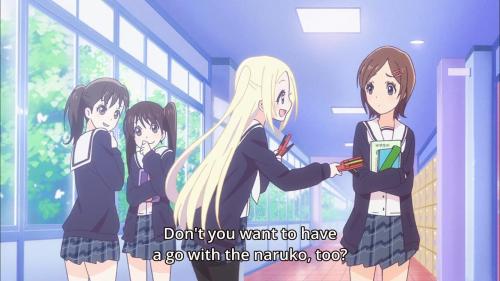
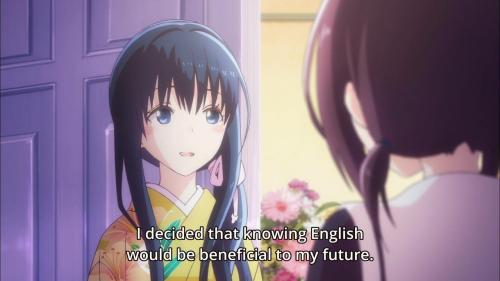
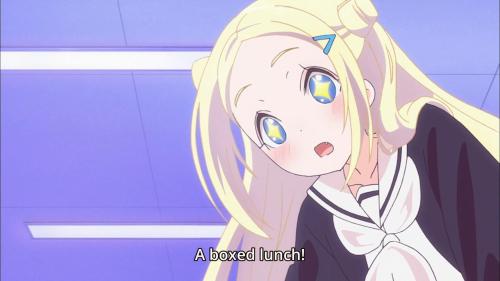
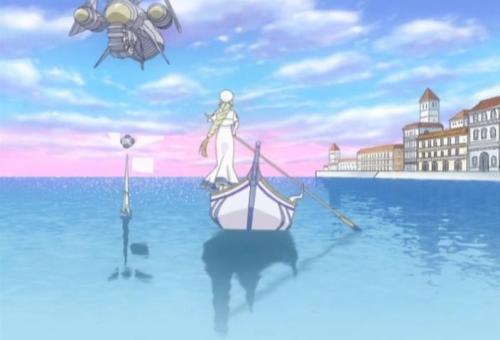
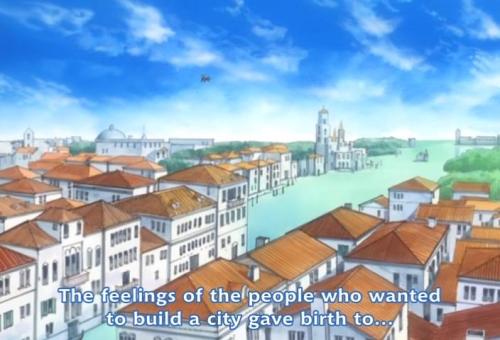
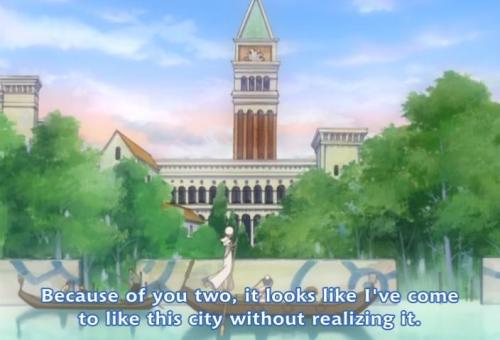
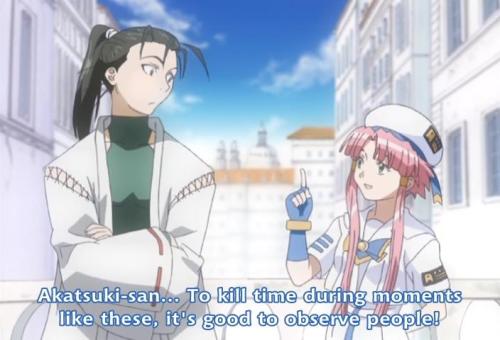

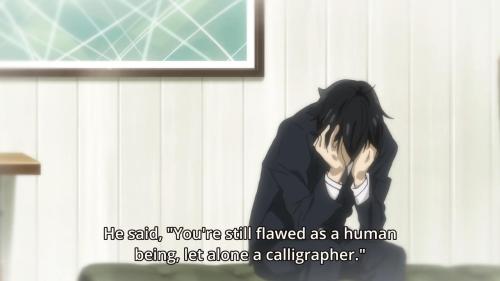
![[HorribleSubs] Barakamon - 01 [720p].mkv_snapshot_15.59_[2014.08.16_18.48.47]](https://animehealing.files.wordpress.com/2014/08/horriblesubs-barakamon-01-720p-mkv_snapshot_15-59_2014-08-16_18-48-47.jpg?w=500&h=281)
![[HorribleSubs] Barakamon - 03 [720p].mkv_snapshot_13.05_[2014.08.16_18.03.18]](https://animehealing.files.wordpress.com/2014/08/horriblesubs-barakamon-03-720p-mkv_snapshot_13-05_2014-08-16_18-03-18.jpg?w=500&h=281)
![[HorribleSubs] Barakamon - 05 [720p].mkv_snapshot_19.34_[2014.08.16_18.16.50]](https://animehealing.files.wordpress.com/2014/08/horriblesubs-barakamon-05-720p-mkv_snapshot_19-34_2014-08-16_18-16-50.jpg?w=500&h=281)
